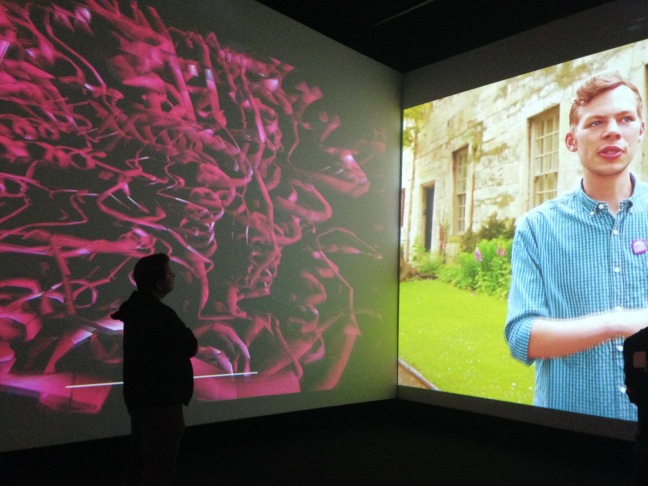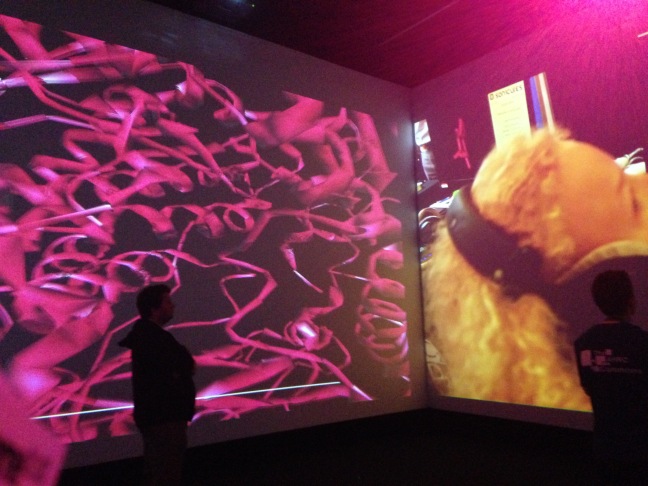(available on the AHRC commons blog too )
From early quick-sketch ideas about complementing visualisations of molecular structures by using spatial audio, the sonicules project grew ‘on paper’ to include a computer game for all ages and live musical performance as part of our public engagement activities.
Throughout the project, I’ve often been surprised, and sometimes overwhelmed, by the richness of interactions between the disciplines represented by the team. A planner by nature, but a musician by training, I had to remind myself often to ‘let go’ in order to allow the creative processes free reign.
Taking part in the AHRC commons underlined the importance of such creative discovery. Sonicules has science at its heart, but aesthetic aspects are also vital for the success of the project and to enable us to engage with new audiences. It was fantastic to be able to meet and discuss with colleagues from all areas of Arts and Humanities research and to see reactions to the artwork produced.
Seeing our specially commissioned short documentary video in the 3Sixty was a thrill – the amazing graphics by Jakub Hader and surround-sound audio by Radek Rudnicki took on an additional immersive dimension, enveloping the audience with music, shapes and colours in order to portray the complexities and seemingly insurmountable challenges of designing new anticancer drugs.
The struggle to shape and fit a new drug molecule into the active site of the target enzyme holds an achingly compelling attraction; as scientists we analyse and design and plan and engineer often without success. But by embracing the artistic, the musical, the emotional, the beautiful we can edge towards discoveries not yet known or understood.
In a smaller, but still important way, the sonicules computer game itself demonstrates simply how important it is to ‘let go’ of our science and engineering ‘intuitions’ and trust in the holistic beauty of the aural and visual aspects.
During the sonicules project our team members – from chemistry, music, visual art, audio engineering and sociology – had to allow themselves to be guided away from first instincts, towards artefacts and outcomes which were not originally envisaged or designed or engineered, trusting in a more fluid way of working with creative possibilities.
The result was an emotionally compelling aural and visual experience – born of science but shaped by art and music – a tangible demonstration of importance of meeting on common ground.






 The whole
The whole 
